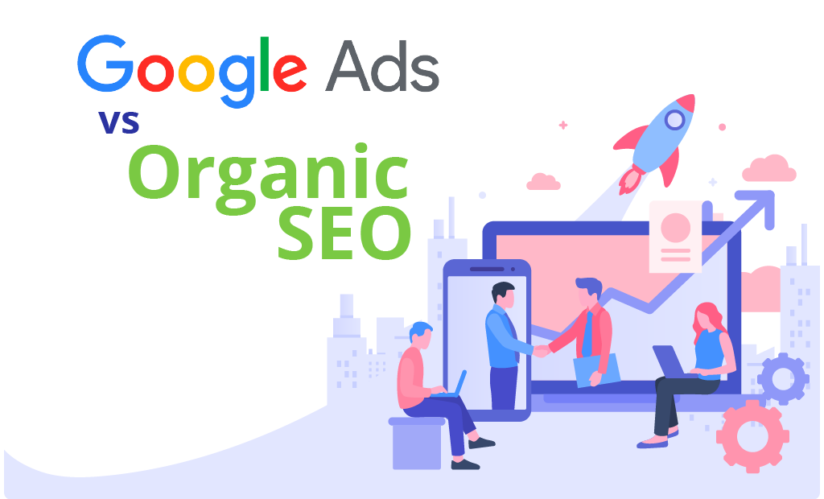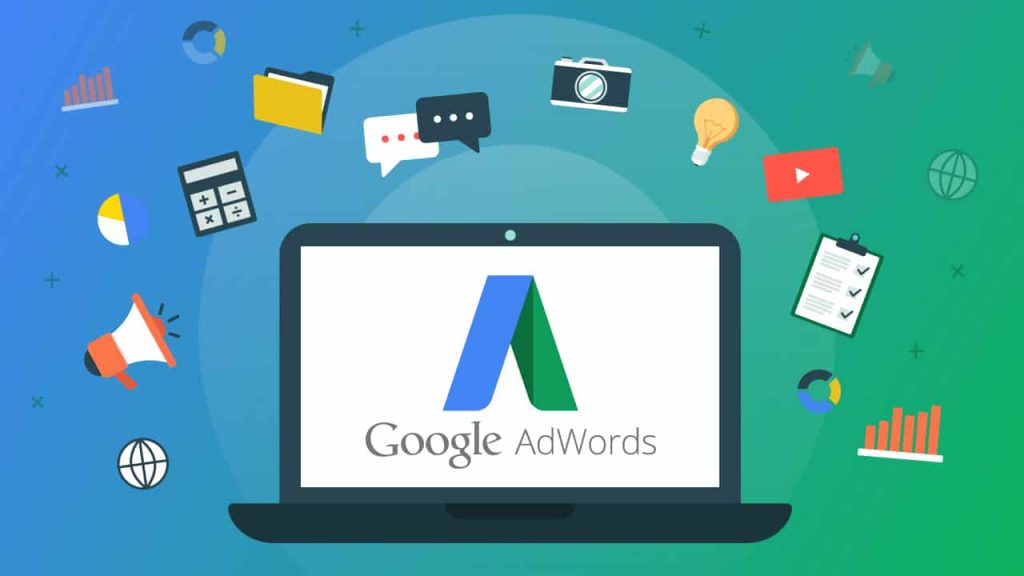Google Ads vs. Organic SEO: A Comprehensive Comparison and Guide by OBCIDO

Choosing between Google Ads and organic SEO can be a challenging decision for businesses, as each strategy offers its own unique advantages and challenges. As a savvy New York web development and digital marketing agency, OBCIDO’s expert team has a deep understanding of both Google Ads and organic SEO to help you determine the best approach for your business. In this comprehensive article, we will explore the core aspects of Google Ads and organic SEO, weighing the pros and cons of both strategies. Drawing on OBCIDO’s wealth of experience and knowledge, we aim to provide a clear roadmap for business owners and marketers to choose the right strategy that aligns with their goals and caters to their unique needs. Discover which advertising method will deliver the best results for your brand and improve your online visibility by understanding the differences and benefits of Google Ads and organic SEO. Understanding Google Ads Google Ads, formerly known as Google AdWords, is a pay-per-click (PPC) advertising platform that allows businesses to create targeted ad campaigns on Google’s search engine results pages (SERPs) and Google Display Network. By placing bids on specific keywords, advertisers can get their ads displayed above or below organic search results, providing immediate visibility to users searching for relevant products or services. Key features of Google Ads include: Customizable Campaigns: Advertisers can tailor their campaigns by selecting location targeting, demographic targeting, ad formats, and budgets. Measurable Results: Google Ads provides detailed analytics, enabling businesses to track campaign performance and make data-driven optimizations. Flexibility: Companies can adjust their ad spend, pause, or modify campaigns at any time based on their needs and performance. Understanding Organic SEO Organic SEO (Search Engine Optimization) comprises strategies and techniques aimed at improving a website’s visibility in search engines without the use of paid advertising. By optimizing website content, meta-tags, and the site’s structure, SEO increases the chances of the site showing up in SERPs when users input relevant keywords. Organic SEO entails: Keyword Research: Identifying and targeting relevant keywords that users are likely to search for when looking for related products or services. Content Creation: Producing high-quality, informative, and engaging content that addresses users’ needs and utilizes targeted keywords. On-Page Optimization: Ensuring that meta-tags, headers, URL structure, and other on-page elements are optimized for search engines. Off-Page Optimization: Building backlinks, enhancing social media presence, and engaging in other activities to bolster site authority and credibility in the eyes of search engines. Comparing Costs: Google Ads vs. Organic SEO One of the main factors determining the choice between Google Ads and organic SEO is the associated costs. Here’s a comparison of the costs involved in each strategy: Google Ads: Businesses only pay when users click on their ads, with costs varying depending on factors like competition, keyword popularity, and ad quality. Google Ads can provide quick results but may require substantial budgets to maintain high visibility, especially for competitive keywords. Organic SEO: SEO is a long-term investment, which often requires a significant upfront cost, especially for on-page optimization, content creation, and link-building efforts. However, once a site ranks high in search results, the ongoing maintenance costs are relatively low. Ultimately, the choice between Google Ads and organic SEO depends on your marketing budget and the desired speed of results. Google Ads may suit businesses with a larger budget who are looking for immediate visibility, while organic SEO may be more cost-effective for businesses with a smaller budget and a long-term growth strategy. Comparing Speed and Control: Google Ads vs. Organic SEO The speed at which results are achieved, and the level of control businesses have over their campaigns, are important considerations when evaluating Google Ads and organic SEO: Google Ads: Campaigns can yield immediate results, as ads start showing up in SERPs as soon as they are approved. Advertisers have granular control over budgets, targeting, and ad formats, allowing for rapid experimentation and optimization. Organic SEO: Ranking improvements through organic SEO can take months, as search engines evaluate website credibility, content quality, and other factors over time. Also, businesses have no direct control over search engine algorithms, making the process less predictable. Comparing Targeting and User Intent Understanding user intent and targeting capabilities offered by Google Ads and organic SEO can help businesses choose the strategy that best aligns with their goals: Google Ads: Advertisers can use advanced targeting options, such as location, demographics, and interests, to pinpoint the most relevant audiences for their ads. Additionally, targeting highly specific long-tail keywords in Google Ads can help capture users with high purchase intent. Organic SEO: While organic SEO lacks the advanced targeting options available in Google Ads, optimizing content for user intent can help businesses attract qualified traffic. By creating content that addresses users’ needs and answers their queries, businesses can increase the chances of attracting users with high purchase intent. Weighing the Longevity of Results The long-lasting impact of each strategy should also be considered when choosing between Google Ads and organic SEO: Google Ads: Results are highly dependent on ongoing ad spend, as ads stop showing once the budget is exhausted or campaigns are paused. Organic SEO: High rankings achieved through organic SEO can have lasting effects, as they are less susceptible to changes in budget. Investing in high-quality content and link-building efforts can provide prolonged benefits in terms of search visibility and user engagement. Achieving Search Marketing Success with OBCIDO Choosing between Google Ads and organic SEO is a critical decision that requires careful consideration of your business’s unique needs, goals, and resources. As a savvy New York web development and digital marketing agency, OBCIDO specializes in both Google Ads and SEO strategies, ensuring that your business achieves optimal visibility and success in search marketing.Browse our partner-sponsored Glasses, with a variety of options to suit every taste and budget, available to buy online The experts at OBCIDO are ready to help your business navigate the intricacies of Google Ads and organic SEO, crafting
Conquering Seasonal Marketing with Google Ads: Unlock the Secret with OBCIDO

Seasonal fluctuations play a significant role in consumer behavior, and smart marketers adapt their advertising strategies to keep up with these changes. Google Ads provides the perfect platform to optimize your marketing efforts for seasonal trends, helping you boost brand awareness, reach, and conversions during crucial periods. As a cutting-edge New York web development and digital marketing agency, OBCIDO understands the immense potential of Google Ads for seasonal marketing success and is here to show you the secret to navigating these fluctuations with strategic precision. In this comprehensive guide, we will share actionable insights and tactics to optimize your Google Ads campaigns for seasonal trends, ensuring you reap the rewards of increased ROI and brand growth. With OBCIDO’s expertise and proven track record, you’ll discover the secret to conquering seasonal marketing with Google Ads and setting your brand up to soar during peak seasons. Understanding Seasonal Marketing and Its Importance Seasonal marketing capitalizes on the fluctuations in consumer demand and behavior throughout the year. It is essential to create tailored advertising campaigns that leverage these changes, ensuring your products or services stay top-of-mind during peak buying seasons. A successful seasonal marketing strategy can lead to increased revenue, higher conversion rates, and a stronger brand presence [source: WordStream] Google Ads, a powerful advertising platform, offers an array of tools and features designed to help marketers adapt to these changes and optimize their campaigns for maximum success during peak seasons. Conducting Thorough Seasonal Market Research To pave the way for a successful Google Ads seasonal marketing strategy, invest time in researching and understanding your unique market’s seasonal trends. Key steps in this process include: Analyze historical sales data: Review your company’s sales history to identify patterns, peak periods, and buying cycles. This data-driven approach will guide your Google Ads strategy and help you target the right periods. Understand consumer behavior: Use tools like Google Trends and Consumer Barometer to analyze consumer behavior and interests related to your products or services during different seasons. Monitor competitors: Keep a close eye on how your competitors approach seasonal marketing and learn from their successes and challenges. Strategically Timing Your Google Ads Campaigns Optimal timing is crucial to the success of your seasonal Google Ads campaigns. Observe the following principles to maximize your ads’ effectiveness: Begin early: Start your seasonal campaigns ahead of peak season to build anticipation and ensure your promotions gain traction before the competition heats up. Gradually increase ad spend: Ramp up your Google Ads spend as the peak season draws closer. This will allow for testing and optimization before reaching the full potential of your campaign. Post-season targeting: Don’t neglect the period immediately following peak season. Consumers may still search for post-season deals or make decisions based on their experiences during the peak period. Optimizing Ad Copy and Creative for Seasonal Relevance Ad copy and creative elements play a vital role in capturing your audience’s attention and conveying your seasonal promotions. Consider these tips when optimizing ads: Use seasonal keywords: Incorporate popular seasonal keywords into your ad copy to increase relevancy and improve ad performance. Utilize tools like Google Keyword Planner to identify high-performing seasonal keywords. Create urgency: Encourage users to act quickly by incorporating phrases like “limited time offer” or “ending soon” into your ad copy. Update your ad creative: Refresh your ad visuals with seasonal elements, promotional offers, or vivid colors to stand out from the competition and increase click-through rates (CTR). Utilize ad extensions: Enhance your ads using Google Ads extensions like sitelinks, callouts, and structured snippets to showcase additional seasonal promotions or products. Adjusting Bidding Strategies and Budgets Adjust your bid strategies and budget allocations to maximize your Google Ads campaign performance during peak seasons. Here are some proven techniques: Opt for automated bidding strategies: Utilize Google Ads’ automated bidding options like Target CPA, Target ROAS, or Maximize Conversions to optimize your budget for better conversions and ROI. Allocate budget for high-performing keywords: Identify your best-performing seasonal keywords and allocate additional budget to enhance their performance. Monitor campaign performance: Consistently monitor your campaign performance to identify areas of improvement and optimize your bidding strategies accordingly. Leveraging Remarketing Strategies for Seasonal Ads Remarketing is an effective tool for re-engaging potential customers who have visited your website or engaged with your brand during peak seasons. Use Google Ads remarketing to: Retarget users who abandoned their carts or browsed specific products during peak periods. Tailor remarketing ads to recent interactions or browsing history to create highly personalized ads. Exclude past converters or segment audience lists to refine targeting and prevent ad fatigue. Analyzing and Optimizing Seasonal Campaign Performance Employ ongoing analysis and optimization to make data-driven decisions and refine your strategy for future seasonal campaigns: Utilize Google Ads’ reporting tools: Monitor key performance indicators (KPIs) such as CTR, cost-per-conversion, and conversion rate. Identify trends and make adjustments to improve overall campaign performance. A/B test ad creative and copy: Test multiple ad variations to identify top-performers and continually refine your approach based on data-driven insights. Leverage Google Analytics: Analyze user behavior and conversion paths to identify bottlenecks and opportunities for improvement in your seasonal marketing funnel. Planning for Non-Peak Seasons Although seasonal marketing strategies focus on peak periods, it’s essential to maintain a year-round presence. Plan for non-peak seasons by: Testing new messaging and advertisement techniques to gauge their potential performance during peak seasons. Maintaining a baseline ad budget to sustain brand awareness and engagement. Conducting competitor analysis and research to inform your upcoming peak-season strategies. Unlock the Full Potential of Seasonal Marketing with OBCIDO’s Expertise Mastering seasonal marketing with Google Ads can be the key to unlocking significant growth and increased ROI for your brand. At OBCIDO, a cutting-edge web development and digital marketing agency in New York, we have the knowledge and experience to guide you through every aspect of your seasonal campaigns, from market research to performance analysis and optimization. Allow OBCIDO to be
